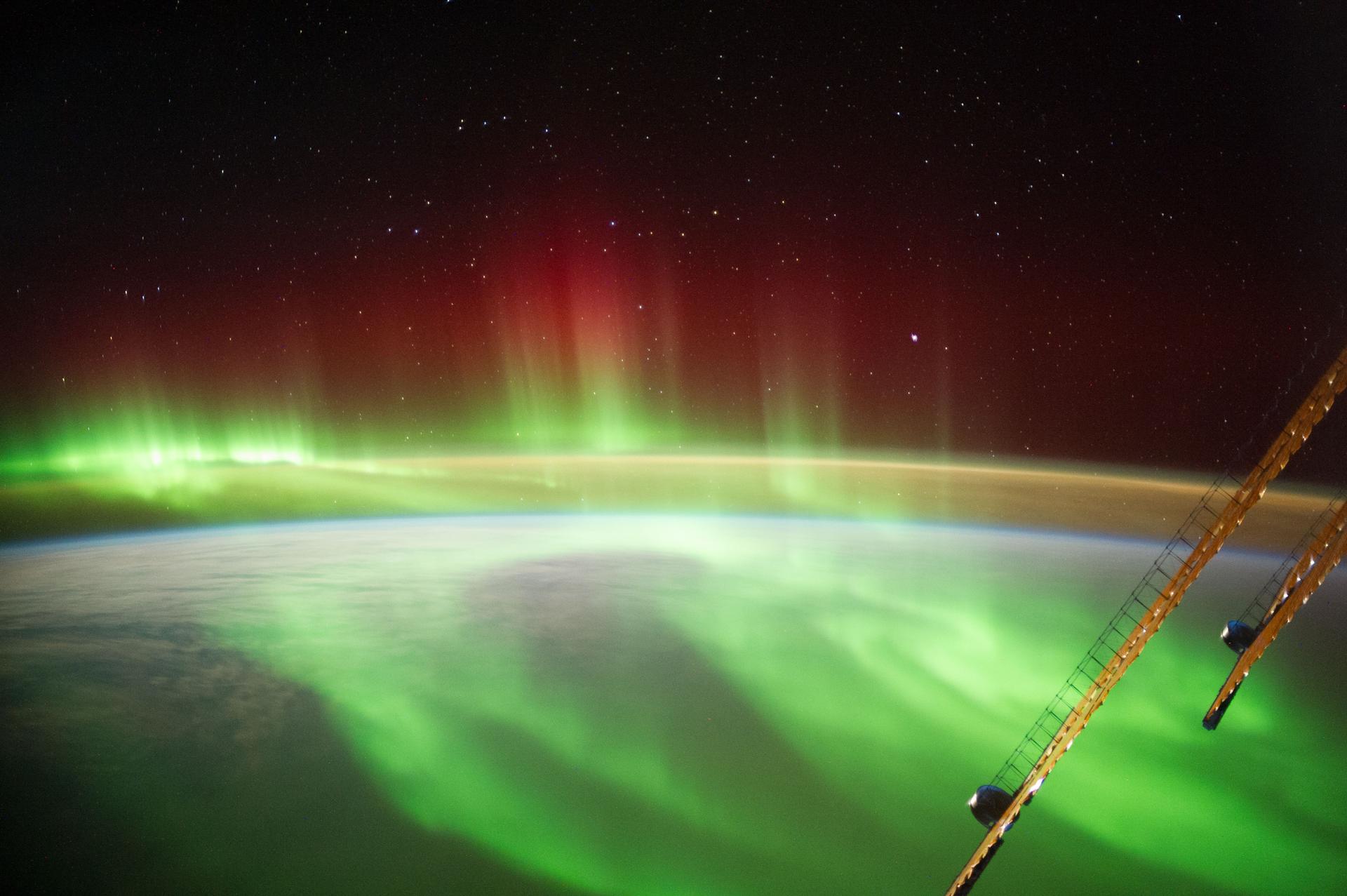Gigantic radiation storms have been pummeling Earth for at least 10,000 years and could strike again, tree ring analysis reveals
One of the events was 80 times more powerful than the strongest solar flare ever recorded.

A series of sudden and colossal spikes in radiation levels across Earth's history could have come from a series of unknown, unpredictable and potentially catastrophic cosmic events, a new study has revealed.
Named Miyake events after the lead author of the first study to describe them, the spikes occur roughly once every 1,000 years or so and are recorded as sudden increases in the radiocarbon levels of ancient tree rings.
The exact cause of the sudden deluges of radiation, which periodically transform an extra chunk of the atmosphere's nitrogen into carbon sucked up by trees, remains unknown. The leading theory among scientists is that Miyake events are solar flares that are 80 times more powerful than the strongest flare ever recorded. But a new study, published Oct. 26 in the journal Proceedings of the Royal Society A: Mathematical, Physical, and Engineering Sciences, suggests that the origin of the radiation bursts could be even more mysterious than first thought.
Related: Strange new type of solar wave defies physics
"These huge bursts of cosmic radiation, known as Miyake Events, have occurred approximately once every thousand years but what causes them is unclear," lead author Benjamin Pope, an astrophysicist at the University of Queensland, Australia, said in a statement. "We need to know more, because if one of these happened today, it would destroy technology including satellites, internet cables, long-distance power lines and transformers. The effect on global infrastructure would be unimaginable."
Each year, temperate tree species develop a new concentric ring around their trunks that, added up, indicates their age. Because trees suck up carbon from the atmosphere, scientists can study the amount of radiation in the atmosphere during Earth's recent history by measuring tree rings for quantities of the radioactive isotope carbon-14 — produced when energetic cosmic rays collide with atmospheric nitrogen.
Scientists have spotted six Miyake events in tree rings so far, indicated by sudden, single-year leaps in the concentrations of carbon-14 and other isotopes; these occurred in the years 7176 B.C., 5410 B.C., 5259 B.C., 660 B.C., A.D. 774 and A.D. 993; alongside a number of other, smaller events spotted at other times.
Get the world’s most fascinating discoveries delivered straight to your inbox.
To investigate if the sudden carbon-14 spikes were caused by incredibly powerful solar flares, the researchers created a simplified model of the global carbon cycle; inputting the tree ring data to demonstrate how carbon was produced by solar radiation and absorbed into Earth's atmosphere, oceans, land and organisms. By comparing their timeline of atmospheric carbon with the known 11-year solar cycle, the researchers expected to find that the years of the Miyake events corresponded to moments of peak solar activity.
But instead they discovered that the Miyake events did not line up with peak solar activity, and some of the events, unlike the brief flashes we recognize as solar flares, lasted for one or two years.
"Rather than a single, instantaneous explosion or flare, what we may be looking at is a kind of astrophysical 'storm' or outburst," first author Qingyuan Zhang, a mathematician at the University of Queensland, said in the statement.
The intensity of these unexplained cosmic barrages is hard to understate. The largest solar storm ever recorded is the 1859 Carrington Event, which, after slamming into Earth, sent powerful streams of solar particles that fried telegraph systems all over the world and caused auroras brighter than the light of the full moon to appear as far south as the Caribbean. The storm released roughly the same energy as 10 billion 1-megaton atomic bombs. If an equally powerful flare were to hit Earth now, it would cause an 'internet apocalypse,' blackouts, and trillions of dollars’ worth of damage, according to scientists. But the Carrington Event was 80 times less powerful than the A.D. 774 Miyake event.
Having cast doubt on the spikes coming from conventionally understood solar flares, the researchers considered whether the Miyake events were generated by supernovas or a type of solar superflare. But these alternate theories have holes too: Supernovas sometimes produce radiocarbon spikes in Earth's atmosphere, but sometimes they don't; and stars like ours are not known to produce solar flares energetic enough to cause the Miyake events. Evidence for a solar superflare is also missing in recovered ice core nitrate records for the events in A.D. 774 AD and A.D. 993.
Venturing into the historical records brought up only two tantalizing references. One made in the Anglo-Saxon Chronicle (a ninth century collection of annals recounting Anglo-Saxon history) refers to a possible aurora in the form of a "red crucifix, after sunset" being spotted in the sky in A.D. 774, but the researchers think it may also have been an optical illusion known as a moon ring. Another account, made in A.D. 775 in the Chinese chronicle Jiutangshu, describes what also could have been an aurora, but its existence is so far not backed up by other records.
The researchers' next step is to gather more tree ring and ice core data to further pin down the timing of the events and the mixtures of isotopes produced by them. But the scientists’ uncertainty as to what the events are, or how to predict when they occur, is "very disturbing," Pope said.
"Based on available data, there's roughly a one percent chance of seeing another one within the next decade. But we don't know how to predict it or what harms it may cause," Pope added. "These odds are quite alarming, and lay the foundation for further research."

Ben Turner is a U.K. based writer and editor at Live Science. He covers physics and astronomy, tech and climate change. He graduated from University College London with a degree in particle physics before training as a journalist. When he's not writing, Ben enjoys reading literature, playing the guitar and embarrassing himself with chess.
 Live Science Plus
Live Science Plus





